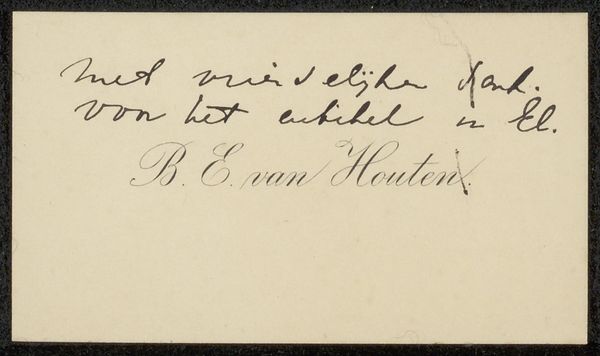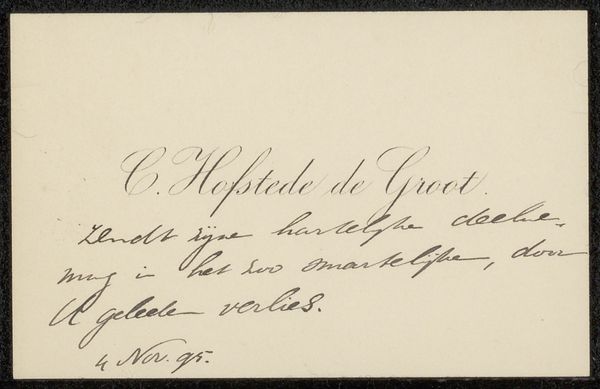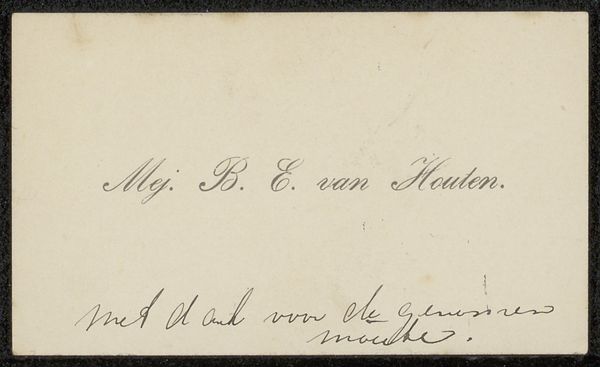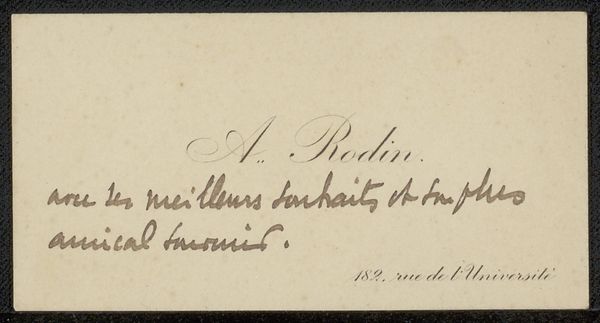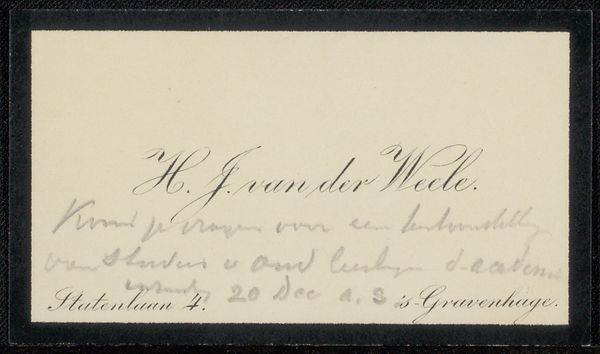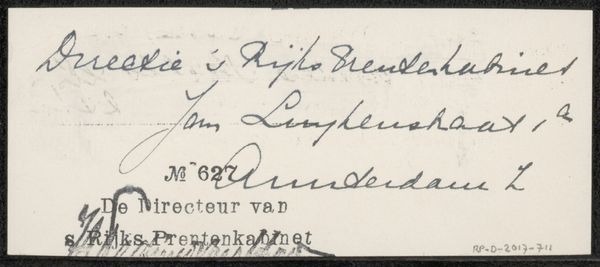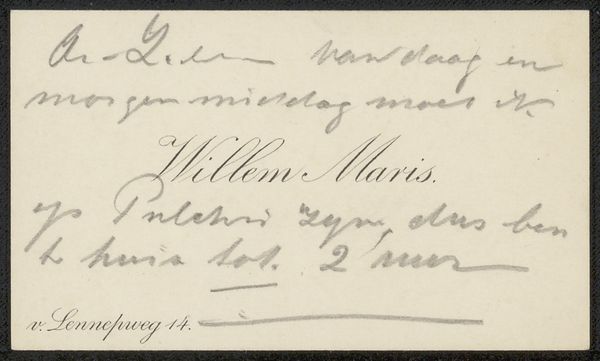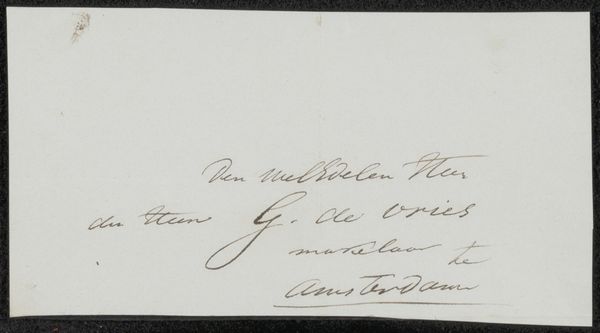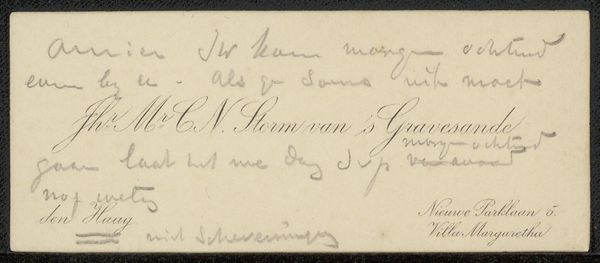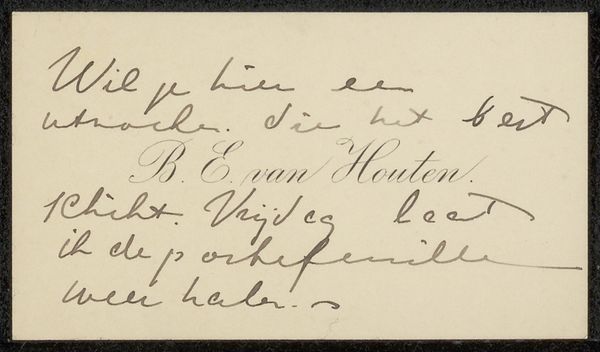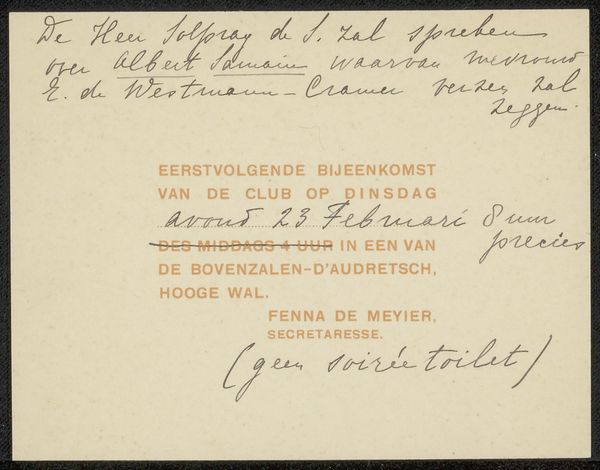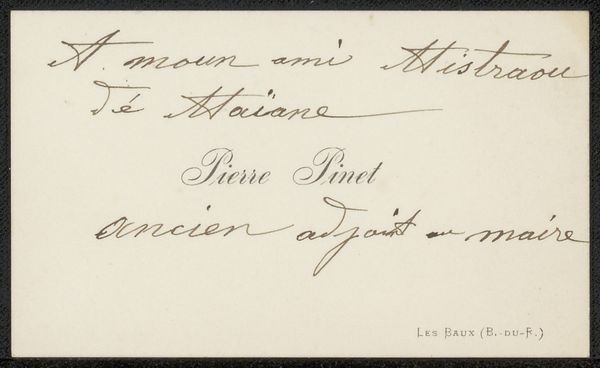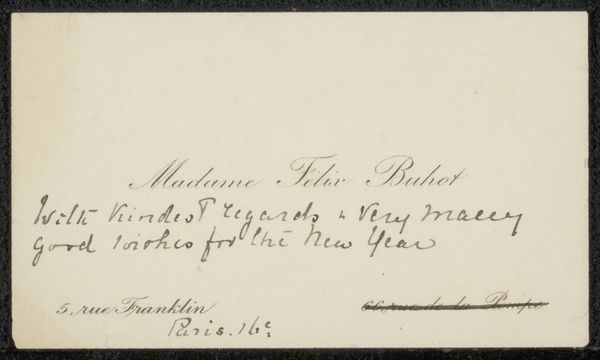
drawing, paper, pen
#
portrait
#
drawing
#
script typography
#
hand-lettering
#
hand drawn type
#
feminine typography
#
hand lettering
#
paper
#
hand-drawn typeface
#
fading type
#
thick font
#
typography style
#
pen
#
handwritten font
Copyright: Rijks Museum: Open Domain
Editor: This is a small, rather unassuming piece titled "Visitekaartje aan Philip Zilcken," created before 1891 by Barbara Elisabeth van Houten. It appears to be a pen drawing on paper—a calling card, really, with handwritten text. It feels very personal, almost intimate, in its simplicity. What story can you find within this artifact? Curator: Indeed, what seems like a simple greeting card opens a window onto a specific social practice. In the late 19th century, calling cards like these were essential tools for navigating social circles. Their design and the message conveyed volumes about the sender’s status, personality, and relationship to the recipient. It suggests the established art scene had codified behaviors and social obligations that artists needed to perform. What does the style of handwriting communicate, do you think? Editor: I suppose the handwriting being "handwritten" gives it that personal touch, warmth that maybe pre-dates standardization, mass-produced versions of these cards. Is there significance to who she's addressing, "Philip Zilcken?" Curator: Absolutely! Philip Zilcken was a prominent artist and art critic of that era. This card might be interpreted not just as a friendly greeting, but as a strategic gesture – an attempt to connect with an influential figure, potentially seeking patronage, validation, or simply entry into certain artistic circles. Editor: So, something seemingly simple speaks to broader dynamics of artistic recognition, patronage, and relationship-building... Wow, I thought it was *just* a card! Curator: Precisely! Even this humble card embodies a world of cultural context: how art was disseminated, reputations were cultivated, and connections were forged within a complex social network. Now, do you look at the work differently? Editor: Definitely! Now, it feels much more significant—like a tiny piece of evidence revealing how artists positioned themselves in society. Thank you. Curator: My pleasure. It shows that every image has its history to reveal.
Comments
No comments
Be the first to comment and join the conversation on the ultimate creative platform.
